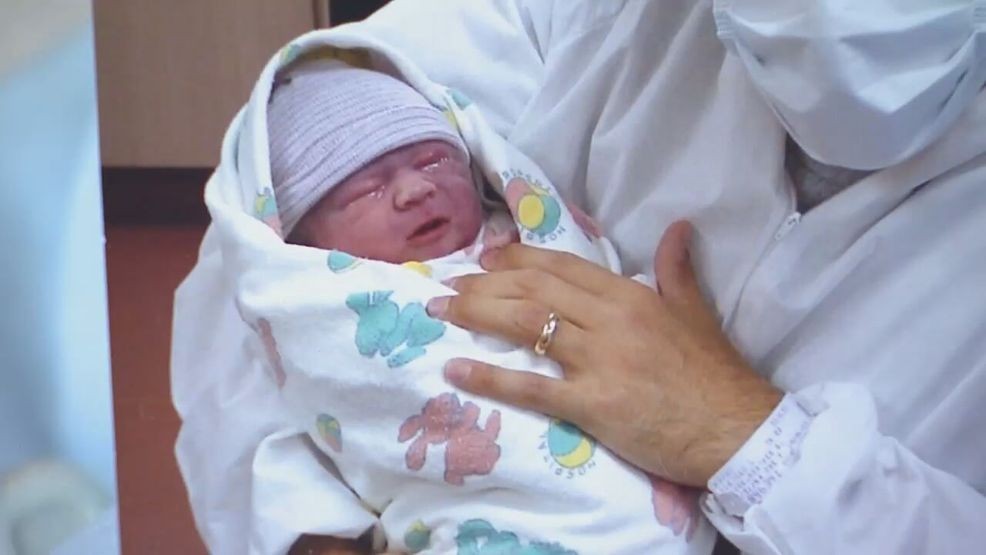
The sudden, unexplained death of a seemingly healthy infant is one of the most devastating tragedies a parent can endure. Now, researchers in Seattle have reached a “breakthrough moment” in understanding Sudden Infant Death Syndrome (SIDS), offering new hope in unraveling the mystery behind these heartbreaking losses. This scientific advancement is deeply connected to the story of a local family whose tragedy occurred nearly 22 years ago.
Heather and John Kahan of Mercer Island have transformed their grief into a mission to prevent other families from experiencing similar pain. Their son, Aaron, passed away just five hours after birth, becoming one of the thousands of infants who die annually from SIDS, a condition defined by the absence of a medical explanation for the death.
Turning Grief into Action
In the wake of Aaron’s death, the Kahans established the Aaron Matthew SIDS Research Foundation, dedicating themselves to advancing research into the causes of SIDS. Their efforts have brought together experts from Seattle Children’s Research Institute and other institutions, leading to groundbreaking discoveries.
Recently, the research team performed whole genome sequencing on 144 children who succumbed to sudden, unexplained deaths. They identified variants in eight genes that, while not directly causing SIDS, indicate an increased risk. These genetic markers are also present in individuals who die from sudden cardiac arrest, suggesting a broader genetic vulnerability.
“Every day, 1,000 people die of sudden cardiac arrest. Then you put in also the kids of SIDS that have similar mutation,” explained Dr. Nino Ramirez of Seattle Children’s Research Institute.
A Genetic Link to Sudden Deaths
The discovery that certain gene mutations may predispose individuals to sudden death has significant implications. Dr. Ramirez highlighted that these genetic vulnerabilities could manifest in various ways, impacting infants and older individuals alike. For instance, teenagers with these mutations might suddenly collapse during intense physical activities, while lifestyle factors such as smoking or obesity could exacerbate the risk.
Among those analyzed was Aaron Kahan, whose tissue samples revealed the presence of these risky gene mutations. For his parents, this information has brought a sense of closure, confirming that they were not at fault for their son’s untimely death.
“It’s very freeing. I mean, I’m just so incredibly grateful to the scientists and the medical researchers who have just, their perseverance got us to this point,” Heather Kahan expressed.
Looking Ahead: Transforming SIDS Research
The implications of this research are profound. Dr. Ramirez envisions a future where doctors can screen infants for these genetic markers prenatally or at birth, allowing for early intervention and potentially saving lives. This shift in understanding transforms SIDS from an inexplicable tragedy into a disorder with identifiable risk factors, akin to epilepsy or cardiac conditions.
“Twenty-five years of research is now transforming SIDS into a disorder, a clear, it’s like epilepsy, you know? It’s like cardiac death. There’s something defined that causes it,” he said.
While not all SIDS cases can be attributed to these genetic factors, the presence of such mutations makes infants particularly vulnerable to other known risk factors, such as sleeping position or maternal smoking. This nuanced understanding of SIDS could lead to more targeted prevention strategies.
A Legacy of Hope and Change
Aaron Kahan’s brief life has left an enduring legacy, contributing to a deeper understanding of SIDS and offering hope to families worldwide. His parents, Heather and John, continue to honor his memory through their advocacy and support of scientific research.
“Look how proud I am of my son. He was only here five hours, but look how many things he’s done in his life, which is incredible and not just for us, but for parents all over the world,” John Kahan reflected.
The Kahans’ journey from personal tragedy to global impact underscores the potential for scientific research to transform lives, providing answers and hope where there was once only despair. As the scientific community continues to build on these findings, the future looks brighter for preventing the silent tragedy of SIDS.






